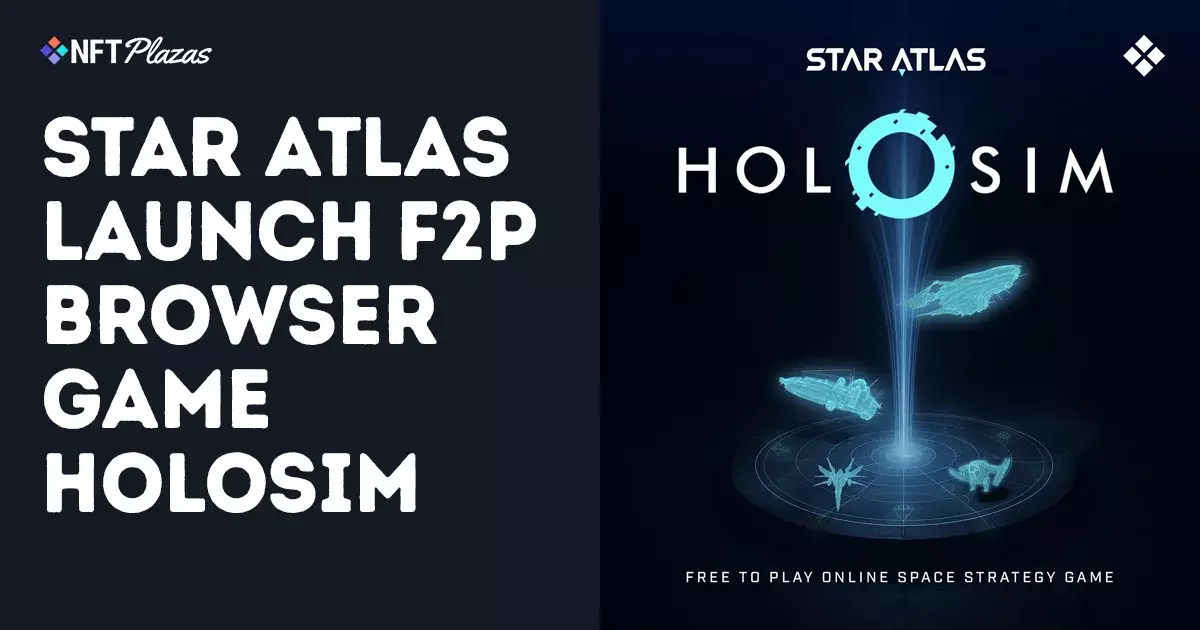In an ever-evolving digital landscape, the introduction of Holosim, a free-to-play variant by Star Atlas, serves as a potential game-changer for the NFT gaming industry. Launching Holosim represents a bold step towards making complex Web3 experiences more accessible. This initiative could not only build excitement around the Star Atlas universe but also offer a reflective critique of the shortcomings often associated with the NFT gaming world. Despite the risks involved, the approach holds a promise that deserves careful examination from both players and investors alike.
A Free Entry Point into the NFT Universe
One of the most notable features of Holosim is its free-to-play model, which radically contrasts with the expensive entry fees often seen in NFT games. Traditional NFT models often place monetary barriers that exclude vast swathes of potential players, thereby harming community building and game longevity. Holosim cleverly allows newcomers to familiarize themselves with the dynamics of Star Atlas without committing financial resources upfront. The downside? By removing the financial stake, there’s a risk that players may lack the urgency or dedication to fully engage with the ecosystem. This dual-edged sword invites participants but also poses the question: can a free entry point maintain the same community commitment as a pay-to-play model?
Innovative Features That Cater to Engagement
Holosim’s introduction of new features, such as a combat update and an AI assistant, demonstrates a keen understanding of what modern gamers find appealing. The questing system adds layers of immersion and storytelling, offering players daily challenges that keep them returning. However, the road to success is fraught with pitfalls. While these features may appear alluring, their implementation will determine if they genuinely enhance the gaming experience. The risk remains that if these elements fail to deliver, they could tarnish the reputation of both Holosim and its flagship game, SAGE Labs. As these new features are rolled out, the gaming community will be scrutinizing their quality and integration closely.
Building a Community-Driven Economy
Star Atlas boasts a community-driven economy, a feature that could either attract or repel potential players. Utilizing Solana as its backbone and driven by the $ATLAS token, the ecosystem is a case study in the principles of decentralized finance. While decentralization is often lauded as a positive attribute, the reality is that unregulated economies can foster issues like volatility and speculation. For players and investors, this raises concerns regarding sustainability. What happens if the $ATLAS token falters? Such questions underline the need for cautious optimism toward the improvements that are geared to enhance user experience.
Trial and Error: The Path to Improvement
Holosim serves as a testing ground for new features before they reach SAGE Labs. This is a prudent approach to incorporate user feedback and iterate on game mechanics. Nevertheless, the trial-and-error methodology is often a double-edged sword; while it can foster innovation, it can also lead to frustration if features are temporarily unstable or unbalanced. The gaming public has little patience for poorly executed mechanics, especially in a marketplace rife with alternatives. Star Atlas must tread carefully to ensure that Holosim not only serves as a sandbox for testing but also retains high levels of player satisfaction.
Looking Toward the Future
With market capitalization figures hovering around $21 million for $ATLAS, the stakes are becoming increasingly high. Players are keeping an eager eye on the engagement levels of Holosim as they await its effect on the main game, SAGE Labs. Star Atlas must leverage these initial experiences to cultivate a committed player base that believes not just in the game’s mechanics but in the foundational ethos behind the NFT model in gaming. As the landscape becomes saturated with numerous NFT titles vying for attention, the innovations within Holosim may set new standards, both good and bad, for the genre moving forward.


Leave a Reply